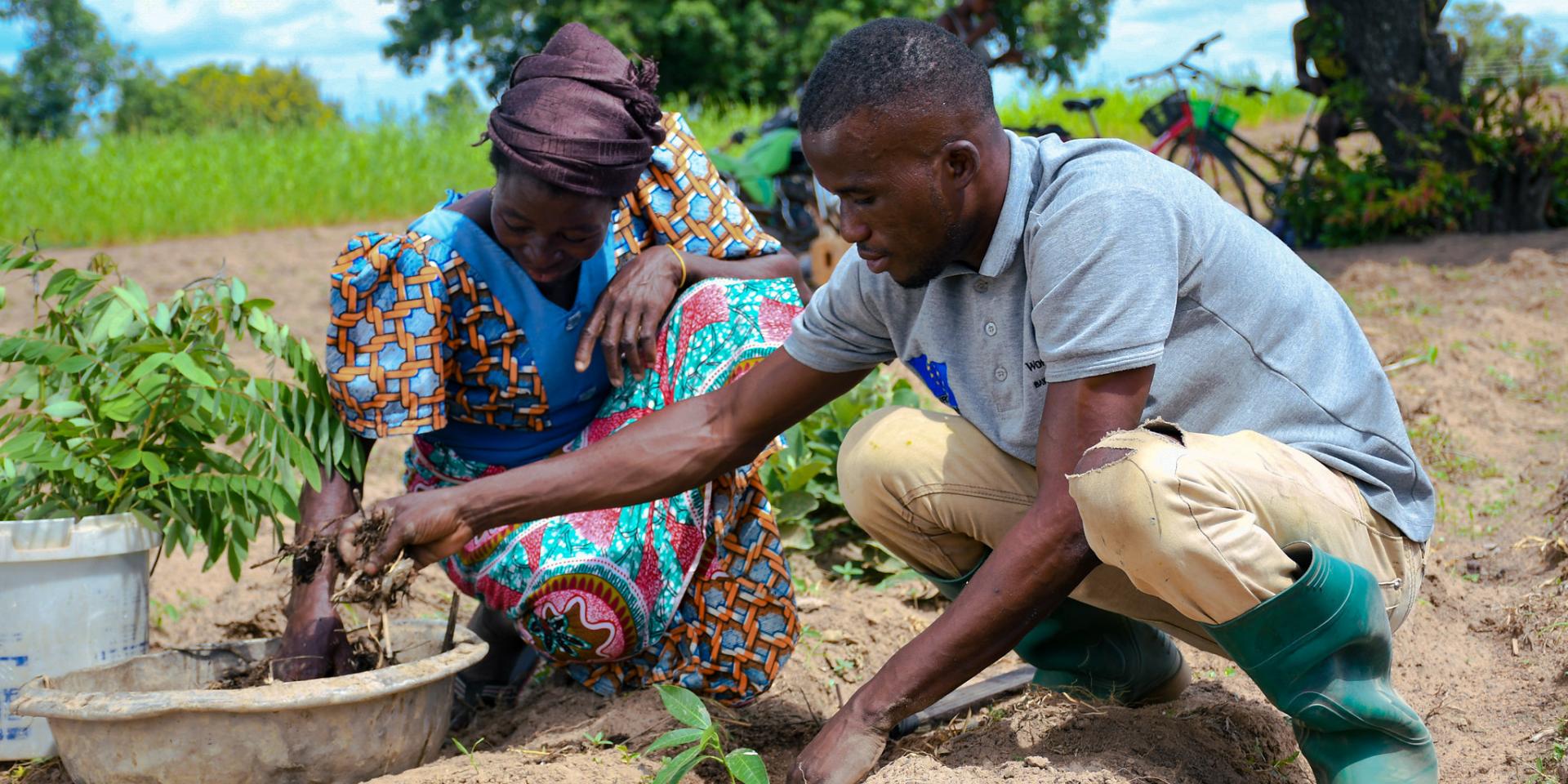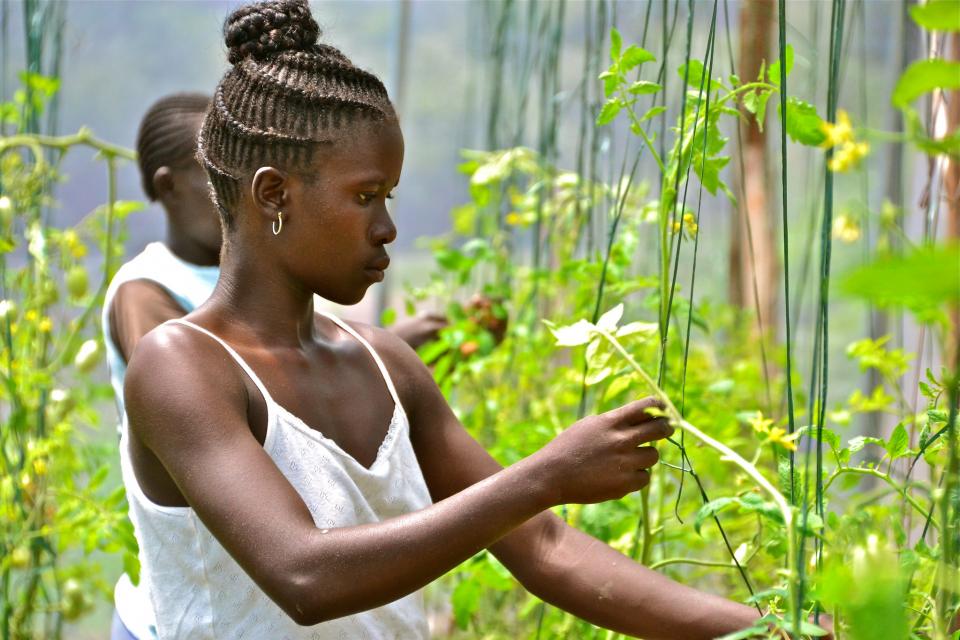Everybody’s hustling—creating youth employment alternatives in agri-food systems

Young people are “hustling”. They are working multiple jobs and side hustles to make ends meet. Creating opportunities for young people in agricultural and rural development can reverse the perceptions that farming is more financially precarious and less rewarding than other occupations.
Youth working in agriculture often face significant pressure to generate sufficient income, perceiving farming as more financially precarious and less rewarding than alternative occupations. As a way of earning more income, many young people are taking on a range of jobs and income-generating activities known as “hustling”, which includes informal, temporary and often concurrent jobs just to make ends meet.
However, hustling typically has limited profitability and increased risks. Youth working in agriculture often perceive farming as more financially precarious and less rewarding than other occupations. Supporting and increasing opportunities for youth employment in food, land and water is crucial for a transformation towards more sustainable, equitable, and resilient food, land, and water systems in low- and middle-income countries.
CGIAR’s GENDER Impact Platform hosted a virtual research seminar on May 28, 2024, where researchers presented study findings with a youth or social inclusion perspective.
Young people are key to agricultural and rural development, and integrating youth and social inclusion into agricultural research for development (AR4D) is essential for meaningful change.
Navigating the nexus of aspirations and realities
In a presentation about enhancing livelihoods of rural youth in Southern Nigeria, Béla Teeken from IITA emphasized that creating opportunities and investing in modern technologies that reduce physical agricultural labor can engage youth more effectively than trying to change their mindset about working in the agricultural sector.
While both young men and women hustle, Teeken stressed that non-farm jobs are often more accessible to young men. And young women’s imagined futures tend to exclude agriculture because of the physical drudgery. Realizing women’s aspirations is also constrained by assumed and unpaid caregiving roles that hinder women from hustling, creating aspiration gaps between their current and envisioned livelihoods.
For both young men and women, increasing accessibility to and profitable payoffs from these activities can transform hustling from a survival strategy to a viable livelihood strategy. Teeken recommended improving access to higher education and vocational training for young women to bridge the aspiration gap; improving social protection, rural infrastructure, mechanization and market access; and supporting non-agricultural livelihood opportunities to generate income that is reinvested in agriculture.
Engaging youth in agroecology transitions
Meghajit Sharma (Alliance of Bioversity International and CIAT) addressed the challenge of youth leaving the agriculture sector in India, Kenya, Peru, Tunisia and Zimbabwe. Sharma also outlined anecdotal findings on the underrepresentation of youth in farmers’ collectives. This research used insights from interviews about the agricultural experiences of youth. Young people were asked to envision their ideal farm, collective group, environment, agency and action in agroecological contexts.
The findings show young people recognize that agroecology has both instrinsic and instrumental values. Its intrinsic value includes enhanced productivity through diversification and resource management, job creation and income enhancement. And its instrumental value is in preserving natural ecosystems through community efforts that support environmental care, sustaining agricultural productivity and natural resources.
Gender roles, age, education and wealth impact participation in agrifood systems
Renee Bullock from ILRI emphasized that gender roles, age, education and wealth influence young people’s participation in livestock practices Maasai, Kalenjin and Kikuyu communities in Kenyan livestock farming. For, example, most women own animals of lower economic value, such as chickens and goats, compared to men.
Bullock recommends encouraging young people to share their challenges and experiences, identify opportunities in mixed crop-livestock systems, and to develop strategies that balance the social and economic impacts of different livestock practices.
While challenges vary, the aspirations of young men and women are the same
Jummai Yila from IRRI focused on the evolving roles of young people in food production, marketing and processing across Ghana, Cameroon, Nigeria and Mali. While opportunities for participation and the challenges along the agricultural value chain vary by gender, the aspirations of young men and women in this region are similar.
Infrastructure and regulatory support, tailored training in agricultural practices, gendered solutions to enhance access to land, farm equipment, financial support, and robust market networks will create greater opportunities for youth participation.
Creating mentorships and sharing experiences
Kanwal Waqar from IWMI shared experiences from IWMI Pakistan’s WRAP program, which aimed to bridge gender disparities in agricultural decision-making that exist due to social norms, lack of institutional capacity, inadequate representation, gender-blind policies and insufficient sex-disaggregated data.
To promote gender-inclusive water governance, the program targeted progressive female farmers to reach other rural women, provided capacity-building for young professionals and farmers on Gender Equality and Social Inclusion (GESI), and developed a practitioner’s cheat sheet.
Counteracting the hustle
The definition of ‘youth’ is not merely defined by age but also by the life course stage, making it a relational concept. Youth and social inclusion are critical for transforming agri-food systems in low- and middle-income countries.
Engaging young people in agriculture requires creating opportunities, addressing socioeconomic inequalities, and providing supportive environments. Involving young people in designing research methodologies and collaborative solutions is essential for meaningful youth engagement in agriculture. Establishing mechanisms for mentorship and sharing experiences will help sustain young people’s involvement to drive transformation in agri-food systems.
Further studies are also needed to explore the nuanced lived experiences of young people across different contexts. Comparative multi-site studies can provide insights applicable across varied settings, considering the contextual nature of youth definitions and experiences.


